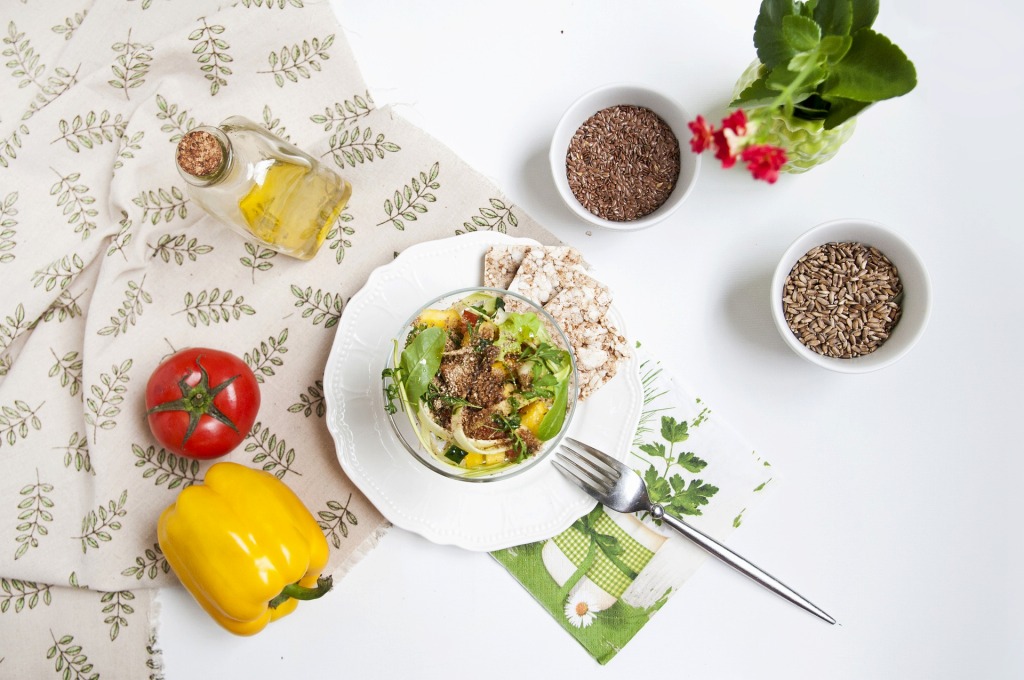Nutorition 22-Sep-2019

The three major nutrients are proteins, carbohydrates, and lipids. In order to increase muscle strength, it is necessary to take these three nutrients in a balanced manner.
The basic calories of each nutrient are as follows
- Protein: 4kcal / 1g
- Carbohydrate: 4kcal / 1g
- Lipid: 9kcal / 1g
The calorie balance
- Protein is twice the weight value
- Lipid is 25% of total calories
- Carbohydrates are total calories minus protein and fat calories.
If the daily target calorie intake is 2500 kcal and the bodyweight is 60 kg, the ideal intake balance of the three major nutrients is like this.
- Protein 60x2 = 120g (480kcal)
- Lipid is 2500kcal x 0.25 = 625kcal (69.44g)
- Carbohydrates are 2500kcal-480kcal-626kcal = 1394kcal (348.5g)
| Weight (g) |
Calories (kcal) |
|
|---|---|---|
| Protein | 120 | 480 |
| Carbohydrates | 348.5 | 625 |
| Lipid | 69.44 | 1394 |
The knowledge of each nutrient
Furthermore, there is basic knowledge that should be kept for each nutrient, so I would like to explain it.
Protein
The word “protein” comes from “Proteos”. Protein is a vital nutrient and essential for maintaining vital activity and metabolism. The most crucial component of enzymes is protein. Neurotransmitters, hormones, etc. are also made from proteins.
There are tens of billions to trillions of proteins, and our body has about 100,000 types of proteins. And protein is made up of a combination of about 20 amino acids.
Protein (amino acid) recycling.
Originally humans need 250g of protein per day. Of that, about 200g is recycled from the body, and 50g of the rest can be taken from outside the body. However, since amino acid degradation occurs when recycled, it is desirable to consume more than 50 g of protein from outside the body.
About amino acids:
Amino acids become a material (protein) for the body (muscles and skin). There are 20 types of amino acids, which make up 20% of the human body. Also, amino acids always have NH2 (amino group) and COOH (carboxyl group).
9 essential amino acids: It cannot be created in the body.
Valine, leucine, isoleucine, lysine, threonine, tryptophan, methionine, phenylalanine, histidine.
11 non-essential amino acids: It can be created in the body. Non-essential amino acids are amino acids other than essential amino acids.
Arginine, glycine, alanine, serine, tyrosine, cysteine, asparagine, glutamine, proline, aspartic acid, glutamic acid.
Amino acid score
Proteins are made based on the fewest amino acids.
Amino acid score of 100 is perfect. The amino acid score of animal meat and eggs is 100 points. White rice 65, flour 41, these restricted amino acids are lysine. Soybeans are 80-100. Soybean's limiting amino acid is methionine. Animal protein has high amino acid score, vegetable protein has low amino acid score.
In order to make up for the shortcomings of vegetable protein, it is better to eat together and eat grains and soybeans together.
Relationship with meal and suppliment
100g of meat contains about 20g of protein.
Egg 6.2g / 1 piece, Dairy product 7g / 200g, Soybean 34g / 100g, Natto 7.4g / 45g
Whey protein: Approx. 30 g for a regular product, about 22 g for protein
Carbohydrate
Carbohydrate is a mixture of sugar and dietary fiber. Carbohydrate = not carbohydrate.
Carbohydrate consists of carbon + oxygen + hydrogen.
Carbohydrates are repeatedly decomposed and finally become monosaccharides (glucose).
Sugar is basically a source of energy, but excess sugar is stored in the liver and muscle as glycogen,Furthermore, it becomes fat when it remains.
Therefore, do not take too much sugar.
In addition, when glucose is taken into the body, the blood sugar level rises, whereas insulin is secreted from the pancreas. Insulin has the effect of lowering blood sugar levels. This is the normal functioning of the body, but excessive intake of carbohydrates and sugars causes excessive secretion of insulin, which causes blood sugar levels to fluctuate in the body. This causes sleepiness and physical malaise and causes damage to blood vessels.
This is called a blood sugar spike and is said to cause diabetes.
Then, if it is said that the carbohydrate restriction said recently is good, it is also a question. This is because the nutritional balance may be lost or the intake of dietary fiber may be insufficient, leading to a deterioration of the intestinal environment and constipation.
Proper carbohydrate intake is also mentioned above, but another way of thinking is that 50% to 65% of the total daily calorie intake should be taken as carbohydrate. (Recommended standards from the Japanese Ministry of Health, Labor and Welfare)
If you think about what you calculated in the previous table, The total calorie intake is 1394kcal / 2500kcal = 55.76%, which is a very good balance.
Lipid(Fat)
Fat is said to cause obesity and is usually treated as a bad guy. However, fat is one of the essential elements of the human body and is indispensable.
Here, based on the idea that fat has good fat and bad fat, I would like to introduce it with the latest scientific research results.
There are many types of lipids.
First, fat is classified into saturated and unsaturated. Saturation refers to the state of carbon and hydrogen. A hydrogen atom surrounding a carbon atom and a portion of the hydrogen surrounding the carbon lacking is called an unsaturated fatty acid, and if there is only one missing portion, a unity unsaturated fatty acid, more than that the case is called polyunsaturated fatty acid.
Saturated fatty acid
(Solid at normal temperature) --- The shorter, the more anti-inflammatory. Difficult to oxidize.
Short-chain fatty acids: butter. Butyric acid, acetic acid, and propionic acid, which are produced in the human intestine
Medium-chain fatty acids: Coconut oil, MCT oil. It can also be used as a material for ketone bodies.
Long-chain fatty acids: Lard, beef tallow
Unsaturated fatty acid
(Liquid at room temperature) Unsaturated fatty acids are divided into monovalent and polyvalent types. This classification is based on the number of places of oxidative damage.
Unitary unsaturated fatty acid
Omega 9: Monounsaturated fatty acids mean that there is only one unsaturated part in the molecular structure.Oleic acid: olive oil, avocado.Good for heat.
Polyunsaturated fatty acid
OMEGA 6: Linoleic acid (salad oil)
OMEGA 3: Alpha-linolenic acid (linseed oil). DHA / EPA (bluefish, etc.)
Trans fatty acid
Margarine, shortening. Not good for health.
Good and bad lipids (general theory)
It has been said that saturated fatty acids (mainly animal fatty acids) are harmful to the body and vegetable fatty acids are good for the body, but recently it has always been said that this is not the case.
Instead, the risk of vegetable fatty acids has been shown.
Bad lipid
Trans fatty acid, forcibly solidified for industrial use, difficult to digest and decompose, high health risk.
Omega-6 fatty acids (not harmful, but modern people tend to overdose so be careful)
Good lipid
OMEGA 3 (insufficient for modern people): Relieve/suppress inflammation in the body
OMEGA 9 (hard to oxidize): Relieves / suppresses inflammation in the body Medium-chain fatty acids (easy to burn as energy)
Balance is important
Ministry of Health(Japan), Labor and Welfare standards Lipid 20% -30%, saturated fatty acid 7% or less, omega 6 series 8-10g, omega 3 series 1.5-2g
